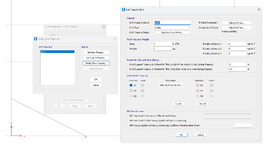Follow along with the video below to see how to install our site as a web app on your home screen.
Note: This feature may not be available in some browsers.
1.Start by opening your existing ETABS model or create a new one.I have Etabs 20.0 and can't figure out how to model inclined support (roller restraint). There was In SAP200 option to define local axis for restraints/supports.
Thank you for your help in advance.
Honza

